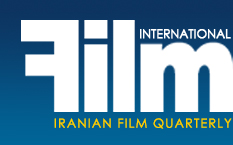|
Home video network: A new phase of film production and screening in Iran
A New Medium for Iranian Families
by Mehrzad Danesh
|
Video tapes constituted a new phenomenon introduced to the Iranian society soon after the victory of the Islamic Revolution. Due to relative stagnation of cinema in early post-revolution years, videos could secure a foothold and movie buffs leased video tapes from special video clubs to watch them at home. Before long, however, cinema officials reached the conclusion that such clubs should be shut down in order to clear the way for growth of the Iranian cinema under greenhouse conditions. “Fighting the corrupt western culture” and other ideological approaches were also influential in that decision. In the absence of videos (and severe restriction of foreign film screening), the Iranian cinema grew qualitatively and quantitatively; however, this did not mean that people were not eager to watch videos anymore. Although videos were banned and carrying video tapes would entail forfeiture, they were smuggled into the Iranian homes. And apart from dubbed pre-revolution films, many new films were also watched in the original language.
That situation gradually changed. In late 1980s and under new conditions which followed the end of war with Iraq and establishment of the reconstruction government, which put more emphasis on privatization of social institutions, there was a freer atmosphere in the country. On the other hand, new phenomena like the internet and satellite television channels were gaining foothold in the Iranian society. Therefore, after a full decade, the government decided to lift the ban on videos under specific conditions. However, up to a few years ago, video policies were under full control of the government which swayed power through an official state-run institute called “Visual Media Institute.” It distributed video copies of some Iranian and foreign films. This method, however, was doomed from the beginning. The Iranian cinema was suffering from a severe crisis about four or five years ago: widespread illegal distribution of the Iranian films on CDs which were then sold by peddlers on the streets. Serious protests from filmmakers prompted the police to bust film smuggling bands. On the other hand, duplicating films is quite rife in Iran and property rights are easily ignored. A good way to handle that situation was to increase circulation and decrease price of films, though such an approach was not beneficial to those who ran video clubs. Therefore, they decided to follow two paths. The first option was to increase video media institutes and break the monopoly of a few state-run institutes in the field. This was aimed at paving the way for private institutes which worked under legal oversight. Secondly, to delimit supply of films and sell videos at groceries, newsstands, bookshops, and other stores which usually sell audio and visual devices. Therefore, from about three years ago, good grounds were laid for a major development in film production and distribution in Iran, the results of which are now evident in successful supply of home videos. The Ministry of Culture and Islamic Guidance reviewed bylaws on home video network in last spring in order to improve the system and promote quality and quantity of products. One of the most important factors in causing success of the network was its management system. At present, Saeed Rajabi is Director General for Audio and Visual Cooperation as well as home video network at the Ministry of Culture and Islamic Guidance. He is a well-known director and has been active in the field for seven years to promote the situation of home video network. He is known as an innovative manager and has been trying to remove various flaws of the system during his term in office. Under his management, about 23 companies have been actively supplying home videos providing their customers with a wide spectrum of products ranging from Iranian and foreign features to animations and TV series.
SUBSCRIBE
[Page: 40]
|
|
|
|
|
President & Publisher
Massoud Mehrabi
Editors:
Sohrab Soori
Translators:
Sohrab Soori
Behrouz Tourani
Zohreh Khatibi
Contributors
Saeed Ghotbizadeh
Mehrzad Danesh
Advertisements
Mohammad Mohammadian
Art Director
Babak Kassiri
Ad Designers
Amir Kheirandish
Hossein Kheirandish
Cover Design
Alireza Amakchi
Correspondents
E.Emrani & M. Behraznia (Germany)
Mohammad Haghighat (France)
A. Movahed & M. Amini (Italy)
Robert Richter (Switzerland)
F. Shafaghi (Canada)
B. Pakzad (UAE)
H. Rasti (Japan)
Print Supervisors
Shad-Rang
Noghreh-Abi
Gol-Naghsh
Subscription & Advertising Sales
Address: 10, Sam St., Hafez Ave., TEHRAN, IRAN
Phone: +98 21 66722444
Fax: +98 21 66718871
info@film-magazine.com
Copyright: Film International
© All rights reserved,
2023, Film International
Quarterly Magazine (ISSN 1021-6510)
Editorial Office: 5th Floor, No. 12
Sam St., Hafez Ave., Tehran 11389, Iran
Printed in Tehran
Publishing Date Spring 2010
*
All articles represent views of their
authors and not necessarily
those of the editors
|
|
|

